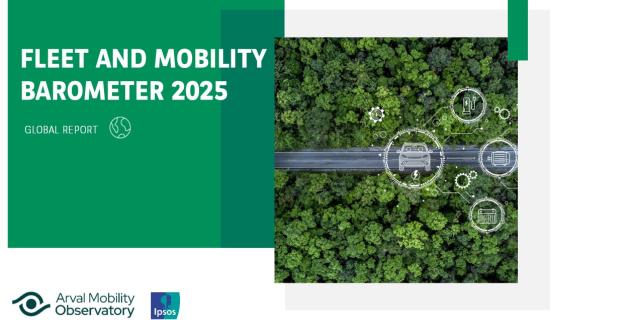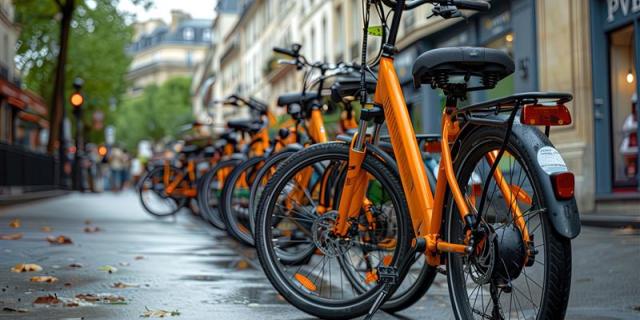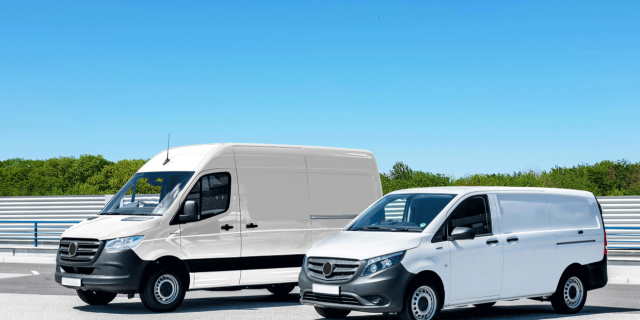
Our World Mobility Tour: Lisbon, the 2020 European Green Capital
Paris, 2nd of March 2021
The next stop in our World Mobility Tour is in Lisbon, the 2020 European Green Capital.
Our discussion with Miguel Gaspar, the Deputy Mayor with responsibility for Mobility and Safety, enables us to discover all the mobility aspects and the strategy of this city regarding the mobility topic.
Arval Mobility Observatory: Lisbon is developing a smart city strategy that places at its core the needs of the citizens. Regarding transportation and urban mobility, what does this mean?
Miguel Gaspar: The city aims to become smart, sustainable, innovative and citizen-centric. The strategy’s main objectives are to attract more inhabitants by improving the quality of housing, offering smart living services and improving the quality of life in the city through measures for mobility. During the last 30 years, the middle classes have left the city of Lisbon to move to other cities in the metropolitan area because it was less expensive but many now commute each day to the city centre. Now, Lisbon intends to increase its population by promoting housing.
One of the aims of this program is also to have a better city, centered on its citizens, through the improvement of quality of life in the city, energy efficiency and mobility. That is the first time that a strong commitment by the 18 municipalities of the Lisbon Metropolitan area was expressed to define mobility as one of the key priorities for the region. We have all understood that if we want to solve our mobility issues inside and outside the city we will have to work together to solve them at Metropolitan level otherwise it will not work.
It also enabled Lisbon to decrease the fares of the public transport passes: people now have the choice between two kind of subscriptions whereas previously there were more than 1500 different price combinations. Now the choices are between one metropolitan pass and one city pass (for each municipality) with a unique monthly price of 40 € for the first one and 30 € for the second one. It now covers all the metropolitan area and all operators, which makes the system more affordable, inclusive and easy to understand. This measure has had a strong impact on demand: +30% of passengers and +40% of subscriptions with more than 2.2 million passengers per day before the Covid-19 pandemic.
There were also investments in the bus network in the Lisbon Metropolitan area, enhancing passenger services with the launch of new routes, along with additional frequencies across all services. And a 40% increase of the metropolitan network with a new circle line, stations and rolling stock. At the Lisbon city level, we acquired 350 low carbon emission buses in 4 years (50% of the fleet, €100M).
For the next decade, there are also investments coming from the Government who are investing €4.5 billion, to develop a high-speed rail link between Lisbon and the country’s second largest city, Porto, to be completed by 2030. Also €2.3 billion for transport projects in the Metropolitan area, including the expansion of Lisbon’s metro system (€ 500 million), adding six stations, improving connectivity between the yellow and green lines, covering the occidental’s Lisbon area and introducing an automatic train control system. Another project is dedicated to increasing the capacity of the existing train lines in the metropolitan area, creating corridors between cities in the metropolitan areas.
All of these investments in public transport will improve their utilization as more people choose them over their private vehicles.
What is the mobility mix used to commute every day?
In 2017, private vehicles were the most popular mode of transport, representing 46% of journeys inside Lisbon. Public transport represented 22%, cycling and walking 32%. Since then, the public investments in public transportation and walking and cycling increased the use of these means.
What are the different mobility solutions available in Lisbon? How do you promote these solutions?
Beginning with active mobility, I would like to mention that during the last three years walking and cycling trips have doubled thanks to a transformation of the public space. Indeed, the municipality has invested in new infrastructures in order to increase access for pedestrians and cyclists with a positive impact on the number of road accident fatalities. In some of these projects, the pavements were improved with larger sidewalks, giving more space for pedestrians and cycling and green spaces, and reducing traffic and parking.
This public space transformation has had an impact on shops with local commerce booming with more people living in the neighbourhood. In Paris, you speak about the 15-minute city; in Lisbon, we call it the city of the short cycle. Cities should create the conditions for people to live, to study, to work and to shop within 15 minutes by walking and cycling around their home, and good public transportation to connect to city level points of interest. They also need better conditions to do so, and quality public space and green areas.
During the last five years, cycling has increased from zero to 2% of journeys inside Lisbon. In 2018 Lisbon launched a public bike-sharing scheme called GIRA, with electric bikes comprising two thirds of the fleet to encourage cycling in the hillier part of the city. Proposing this solution enabled people to try cycling in the city and buy their own bike. By 2021, the network of bicycle paths will be expanded from the current 120 km to 200 km. Cycling represents the most important mobility growth: there are more bicycles on the road than before the Covid-19 pandemic. The municipality supports the development of this mobility solution by incentivizing the purchase of a bike up to 100€, up to 350€ for an e bike and up to 500€ for a cargo bike. Private bike sharing operators are also present in Lisbon.
Other shared mobility solutions were developed: with seven e-scooters sharing providers (4000 available in Lisbon), a car sharing solution (400 with 50 % e-vehicles), and ride hailing.
What is the place of cars in this city? Moreover, what are your targets?
The urban target for 2030 is to decrease the percentage of urban travel by private cars made by city residents from 46% to 34%. During the last decades, the motorization of the population has increased: 150 cars per 1000 inhabitants in the 80’s, 340 in 2000 and 500 today. This puts an enormous pressure on the cities. Our target in 2030 is that 2 in every 3 daily trips could be in sustainable means of transportation, as public transportation and active modes, in order to have a more balanced occupation of the public space, better air quality and quality of life.
Lisbon has set a new target of a 60% reduction of C02 emissions by 2030 compared to 2002. Protection of the environment and climate are core components of Lisbon’s strategy. In 2015, Lisbon was the first capital city to join the Covenant of Mayors for Climate and Energy and in 2011 created its first Low Emission Zone (LEZ) in the city center that limits the use of Euro 3 cars. The introduction of a new rule last summer with a target to reduce journeys by private vehicles in this part of the city has been postponed until 2022 due to the Covid-19 pandemic. The government has implemented fiscal incentives to support the development of electric vehicles; for example at city level, BEVs are able to park free of charge.
How do you support the development of these solutions in term of infrastructure?
The city has 657 public chargers and 76 fast chargers. We are also working now on a draft regulation for electric mobility. An open, regulated market will be launched and a fast growth is expected following this implementation.
What are your plans in terms of Mobility as a Service (MaaS)?
€24M have been invested to modernize the ticketing system in such a way that anyone can sell tickets for public transport. I think that a key trigger for the deployment of MaaS in the city is to open the silos. By signing the Corporate Mobility Pact, more than 85 companies and the City of Lisbon have made a commitment towards a more sustainable mobility. On top of that, we push the European Green Deal compromise. It has to be clear for everyone we will not achieve the targets of the Paris Agreement if one of the triangle fails; clearly companies have to be on-board.
I believe that MaaS will be easier to develop on a B2B market. Indeed, it will be easier for a company to shift from the capital cost of the car to the operational cost of mobility. This market is much mature in paying for a mobility service provider. If cities do not open their system, it will be hard to deploy MaaS. It is important for us to open our public transport and to be connected to anyone selling mobility to anyone else.
As a Smart City, which IoT technology/ smart solutions have you developed?
I would like to say that Smart city is not about technology but is about people and process. We have developed a centralized platform that gathers information and ensures the data is available for everyone and monitors the data that is collected, making it available to city services horizontally instead of closed vertical silos.
A network of air quality sensors is being deployed in the city as well as a new traffic control system in the traffic lights. All of them are sources of data that add to others such the level of garbage containers.
We are also working in different ways to make this data available to the citizen in his specific context, such as location, and incidents or road closures around him.
What is your policy in terms of open data?
The city has a strong open data policy and a central data platform, managed by NEC, has been implemented. It makes available 352 open data sets on its public data platform. Data quality is key and is improved permanently as well as the number of data sets. Our open data policy uses an open by default design, which means that unless the data has issues, regarding security or likewise, it should be made public without any restrictions or encumbrances. This means anyone can use this data, without permission or credits, which we believe incentivizes the reuse of the data and, even better, the creation of added value on this data. We can integrate data and define KPI’s that will be public. We need information flowing from private operators to the city and from the city to private operators. We are involved in European projects like Sharing Cities or Urban CoCreation Lab, as examples, funded by the European Commission.
Following the Covid-19 pandemic, do you see any change regarding the behaviours of the people of Lisbon in regards to mobility?
People are walking, running, cycling more. They also live outside more than before, an increased use of bicycles and of terraces instead of staying in the restaurant.
On the other hand, people do not have the right image of public transport. They are afraid of using public transport and the fear level is far above the real risk. In order to reassure them, politicians have to use public transport and have to improve the confidence levels of people that public transport is clean, safe and ventilated.
In the future cities will manage services, mobility services and for that data will be key flowing from private operators to the city and from the city to private operators. The association between public and private partnership will be key to propose common services. We have a desire to push a mobility catalogue.
Our next destination will be Antwerp in May. So stay tuned!
In brief
Lisbon main figures
- Population (2011): 550,000 inhabitants, plus 600,000 daily commuters.
- Bike lanes in km: 120 km of bicycle trails
- Metro: 56 stations across 4 lines throughout the city
- Tram: six tram lines throughout the city that serve over 26 km of track
- Bus: 745 buses operating 86 bus routes in the city
- Train : 87 million riders every year stations across 4 lines in the Lisbon area











